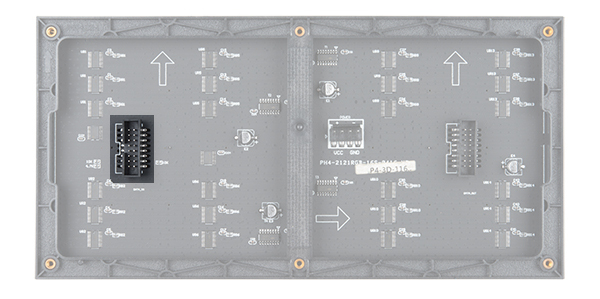

No matter what, you must use good quality USB hubs. You probably want to keep the total under half of USB’s capacity. Somewhere around 20 to 40 Teensys, the total is going to become a substantial part of USB 2.0 bandwidth. Each Teensy can easily handle these speeds, and each runs completely separate, other than listening for the frame sync pulse. With 30 Hz video, each Teensy gets 180 kbytes/sec, and if you play a 60 Hz progressive video, it’s 360 kbytes/sec. But here are the technical issues….Īs you scale up to an extremely large LED array, assuming you follow the 1000 LEDs per Teensy 3.0 guideline, eventually a few technical problems will come into play. Of course there are always going to be challenges as you scale up to very large sizes… mostly the cost of the LEDs, their power requirements, and the man-hours required to physically build the problem.
#DIY RGB PANEL VERIFICATION#
A tremendous amount of analysis, design and careful verification went into making this scalable without performance loss. I’ve been working on this library and its documentation for quite some time. It’s also possible to build projects that run without a PC. Of course, for a new project, my new OctoWS2811 library will save you a lot of money, because the WS2811 strips are much less expensive. I believe at least one of these, maybe both, where covered by Hack-a-Day when they were published. You can find photos and info at these pages: So far, at least 2 projects have used it for large-scale LED projects.

#DIY RGB PANEL CODE#
You can get my code for streaming to thousands of LDP8806s here: All that program does is grab each packet and rapidly burst the bytes out the pins.

The more expensive LDP8806 is much easier than WS2811 because it has flexible and easy timing requirements. Would you believe I made something similar for LDP8806 almost a year ago? It only does streaming from the computer, not locally generated graphics. Posted in LED Hacks Tagged led, led strip, Teensy, ws2811 Post navigation You can check out a video of this app, library, and a 60×32 RGB LED display after the break.
#DIY RGB PANEL SERIAL#
also created a Processing app that takes a video file and turns it into serial data for his LED strip library.

The library requires DMA transfer to display images, so if you’re looking to build a ginormous RGB LED display, you might want to pick up a few of ’s Teensy 3.0 boards These chips are the most common controller chips for the individually controllable LED strips you can find at Adafruit or hundreds of Chinese resellers. ’s LED library works with LED strips based on the WS2811 LED controller IC. He wrote an LED strip library that can control eight meter-long LED strips that can also be used on daisy chained Teensy 3.0 microcontrollers for really large displays. It’s a non-trivial task, but has an interesting solution. Not only do the creators of large displays and LED cubes have to deal with the power requirements of driving a whole bunch of LEDs, but there’s also the issue of getting the frame rate high enough to display video. Building RGB LED displays is one of the most interesting programming and engineering challenges we see here on Hackaday.


 0 kommentar(er)
0 kommentar(er)
